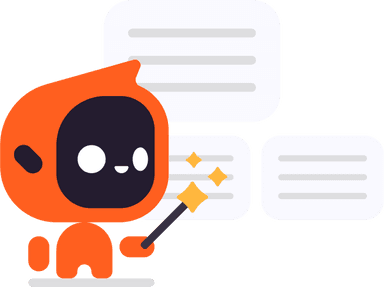Combining Random Variables
Concept Map
The main topic of the text is the statistical method of combining independent random variables to analyze their cumulative impact. It covers calculating the mean and variance of combined variables, the properties of normal distribution, and the practical applications in various industries such as manufacturing and retail. The text emphasizes the importance of these techniques in strategic planning and informed decision-making.
Summary
Outline
Fundamentals of Combining Random Variables
Combining random variables is a fundamental statistical technique used to understand the aggregate effect of multiple stochastic processes. When random variables are independent, their individual contributions to an outcome can be combined to form a new random variable. For example, consider the total inspection time for a vehicle in a manufacturing process, where each inspector's time is a random variable with its own mean and variance. To estimate the total time, we combine these variables, assuming independence, which implies that the performance of one inspector does not influence the others.Calculating the Mean and Variance of Combined Independent Random Variables
The mean of a combined random variable, resulting from the sum of two independent random variables \(X\) and \(Y\), is the sum of their individual means, expressed as \(\mu_T = \mu_X + \mu_Y\). Conversely, for the difference between two independent random variables, the mean is the difference of their means, \(\mu_T = \mu_X - \mu_Y\). This principle holds true for any measurable events, whether they pertain to inspection times, sales figures, or other data.Variance and Standard Deviation in Combined Random Variables
The variance of a combined random variable is the sum of the variances of the individual variables, denoted as \(\sigma^2_T = \sigma^2_X + \sigma^2_Y\) for the sum or difference of two independent random variables \(X\) and \(Y\). However, the standard deviation, which is the square root of the variance, does not exhibit this additive property because \(\sqrt{a + b}\) is not equal to \(\sqrt{a} + \sqrt{b}\). Therefore, while the variance of the sum or difference of two independent random variables is additive, their standard deviations must be calculated from the combined variance.Normal Distribution and Probabilistic Predictions with Combined Variables
The combination of two independent normal random variables results in a new variable that is also normally distributed. This characteristic is advantageous for making probabilistic predictions. For example, if the times for pizza preparation and delivery are independent and normally distributed, the total time from preparation to delivery will follow a normal distribution. This enables the calculation of probabilities for various outcomes, such as the probability that the total time will exceed a certain value.Decision-Making with Combined Random Variables in Practice
The application of combined random variables is crucial in practical decision-making. For example, if two inspectors have identical average inspection times but the variance of their combined work is greater than when working separately, it may be more efficient for them to work independently to reduce variability. In retail, combining the mean and variance of daily sales can help predict weekly sales and manage inventory and staffing levels more effectively.Concluding Insights on Combining Random Variables
Combining random variables is an essential statistical method for analyzing the cumulative impact of multiple independent events. The combined mean is the sum of the individual means, and the variance is additive. However, the standard deviation is not additive and must be derived from the combined variance. These principles have practical applications across various industries, including manufacturing and retail, and are critical for informed decision-making and strategic planning. Understanding and applying these concepts allows for a more comprehensive analysis of complex systems and processes.Show More
Fundamentals of Combining Random Variables
Definition of Combining Random Variables
Combining random variables is a statistical technique used to understand the aggregate effect of multiple stochastic processes
Independence of Random Variables
Definition of Independence
When random variables are independent, their individual contributions to an outcome can be combined to form a new random variable
Example of Independence
The total inspection time for a vehicle in a manufacturing process is an example of combining independent random variables
Mean and Variance of Combined Random Variables
The mean and variance of a combined random variable are calculated by summing the individual means and variances of the independent variables
Applications of Combining Random Variables
Advantages of Combining Random Variables
Combining independent normal random variables results in a new variable that is also normally distributed, allowing for probabilistic predictions
Practical Uses of Combining Random Variables
Decision-Making in Manufacturing
Combining random variables can help make informed decisions in manufacturing, such as determining the most efficient way for inspectors to work
Retail Management
Combining random variables can aid in predicting sales and managing inventory and staffing levels in retail
Importance of Understanding and Applying Combining Random Variables
Understanding and applying the principles of combining random variables allows for a more comprehensive analysis of complex systems and processes





